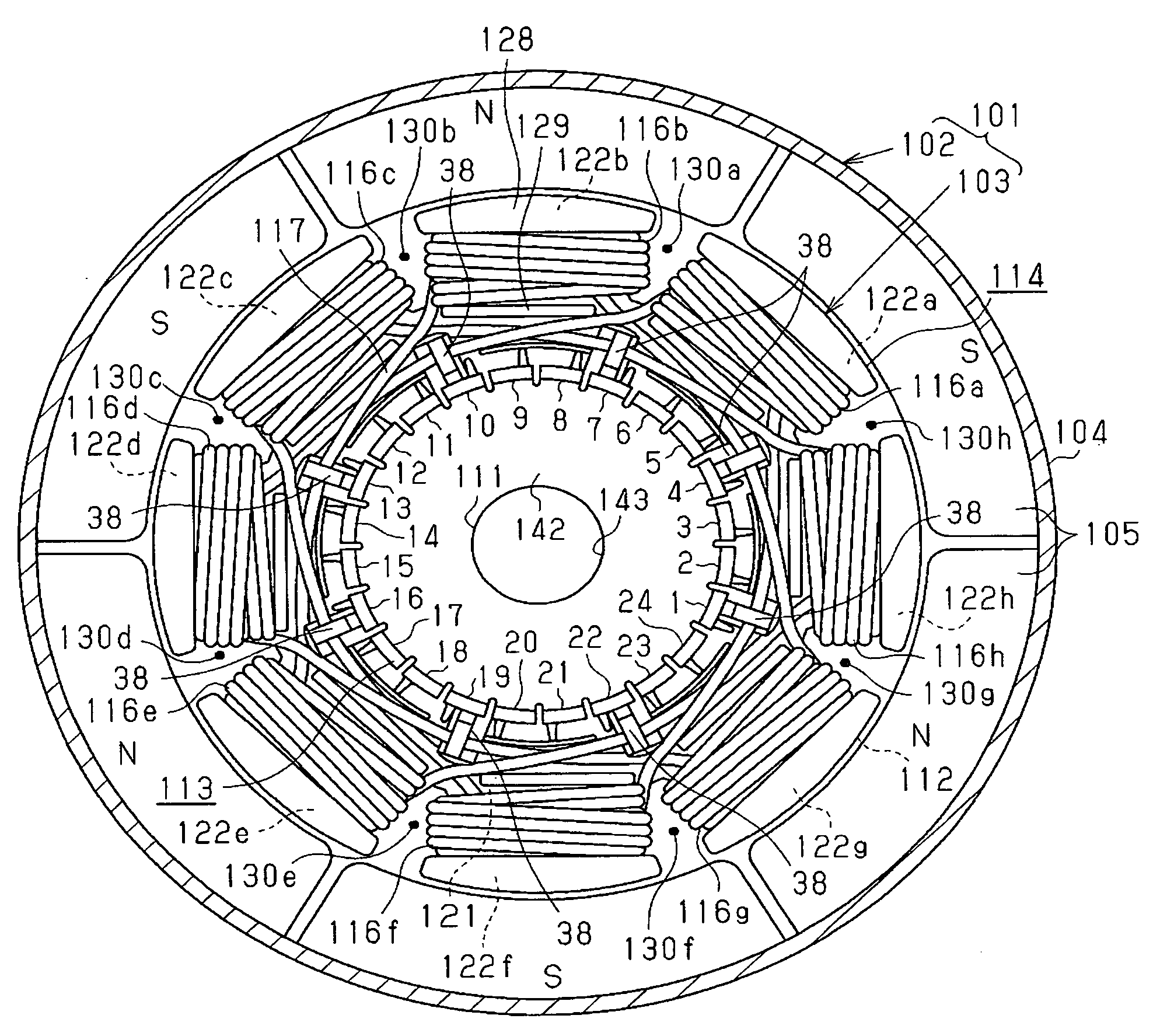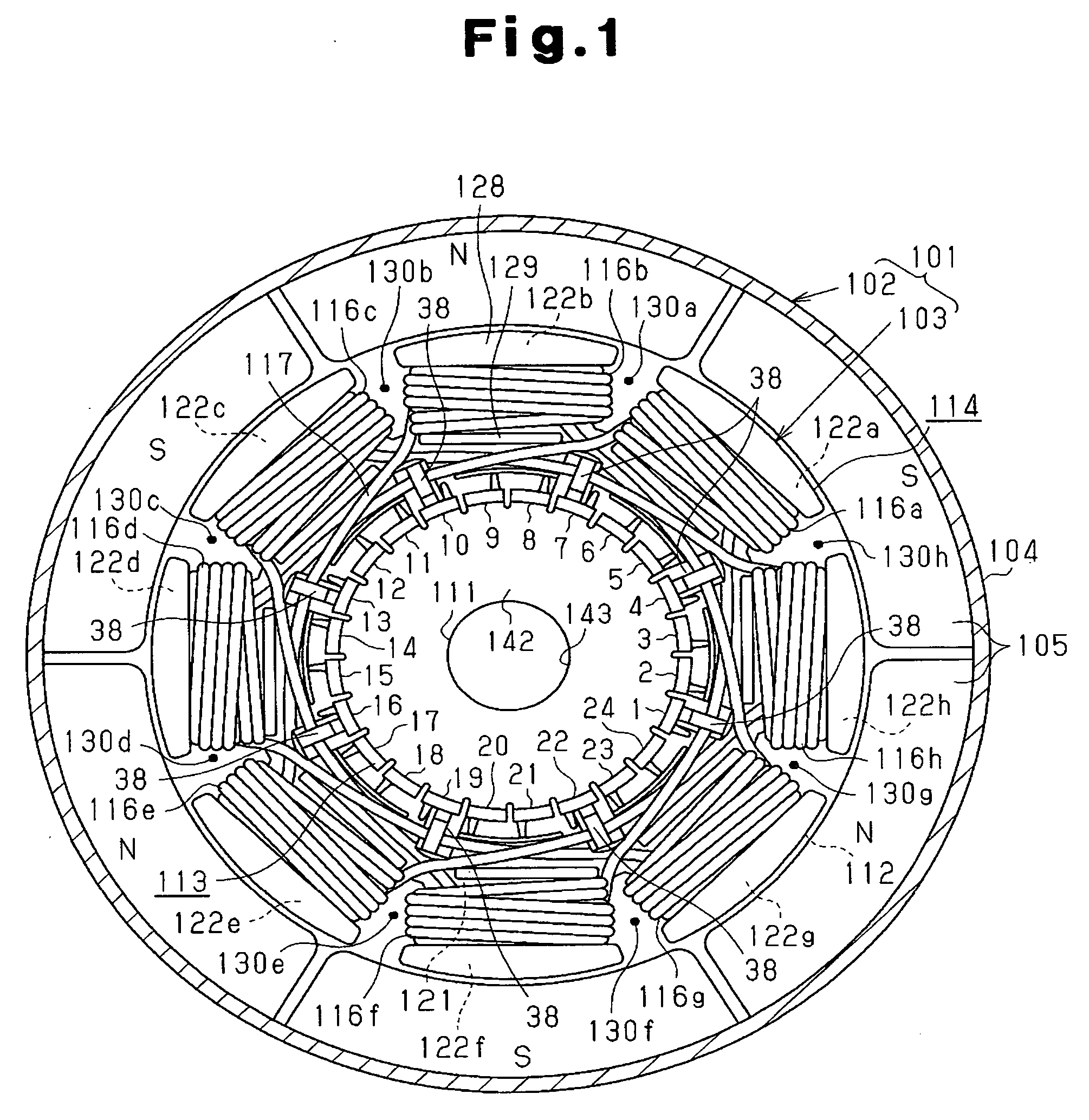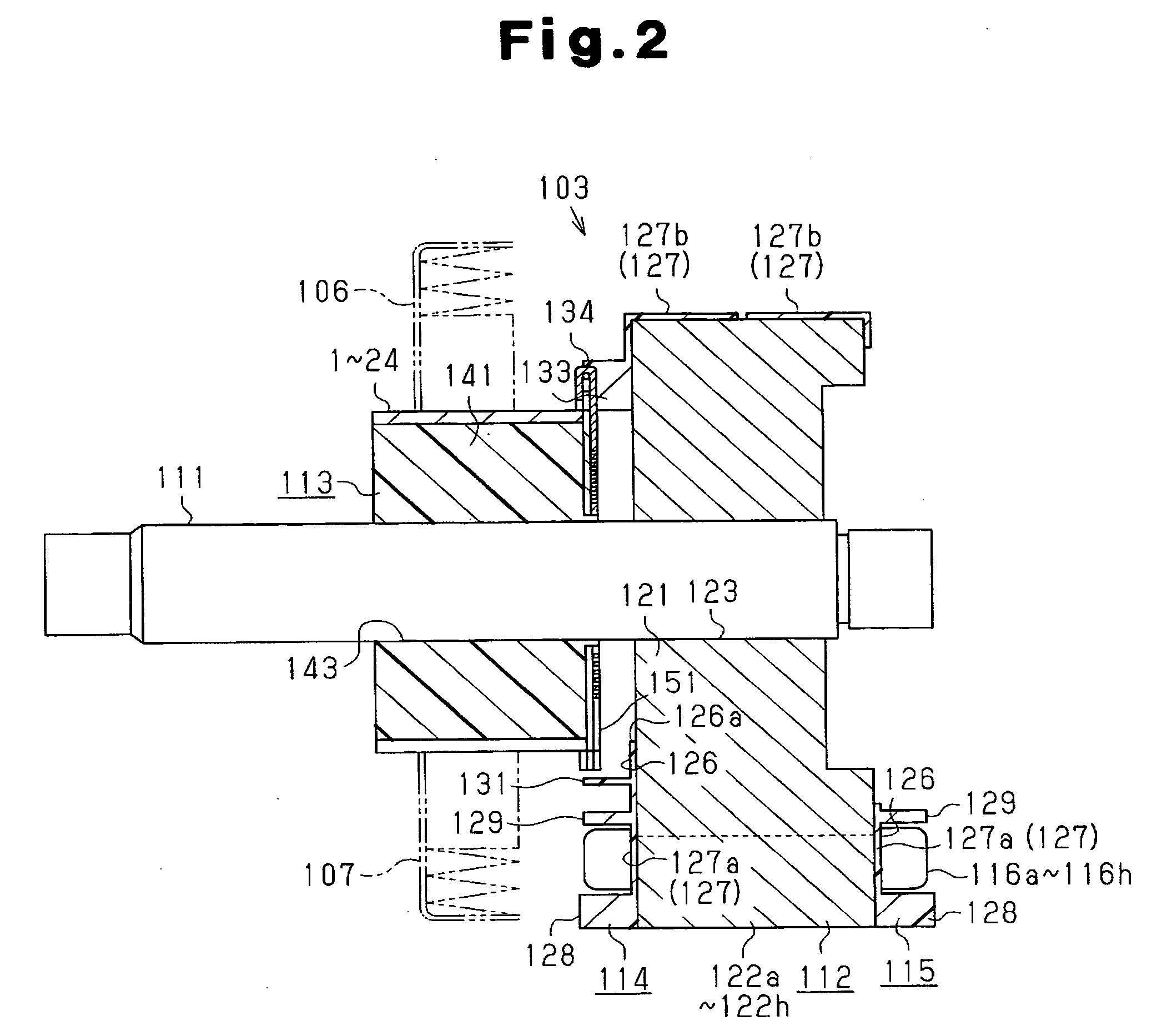Armature, method for manufacturing the armature, and direct current motor
- Summary
- Abstract
- Description
- Claims
- Application Information
AI Technical Summary
Benefits of technology
Problems solved by technology
Method used
Image
Examples
first embodiment
[0031] A first embodiment embodying the present invention will now be described with reference to the accompanying drawings.
[0032] As shown in FIG. 1, a motor 101 in accordance with this embodiment is a DC motor of a 6-pole, 8-slot, and 24-segment type, and includes a stator 102 and an armature (rotor) 103. The stator 102 includes a substantially cylindrical yoke housing 104 having a bottom wall at one end thereof, and a plurality of (six in this embodiment) permanent magnets 105 which are fixed on the inner circumference surface of the yoke housing 104 and are arranged at equal angular intervals. These permanent magnets 105 function as a magnetic pole body having six magnetic poles. Also, on an end frame (not shown) fixed to the yoke housing 104 so as to close the opening of the yoke housing 104, a brush 106 for power supply on the positive pole side and a brush 107 for power supply on the negative pole side, which are connected to an external power source etc., are held (refer to ...
second embodiment
[0136] In the second embodiment, the insulators 214 and 215 may be omitted.
[0137] In the second embodiment, after the coils 214a to 214h have been wound on the tooth sections 222a to 222h, the commutator 213 is mounted on the rotary shaft 111 so that the jumper wires 217 coincide with the claw portions 218. However, the folded elements 218a of the claw portions 218 may be bent in the direction reverse to the direction in the example shown in FIG. 10, namely, toward the side opposite to the core 212. In this case, before the coils 214a to 214h are wound on the tooth sections 222a to 222h, the commutator 213 is mounted on the rotary shaft 111 so that the claw portions 218 are each arranged between two adjacent tooth sections 222a to 222h, and thereafter the coils 214a to 214h are wound on the tooth sections 222a to 222h so that each jumper wire 217 passes through the position of the corresponding claw portion 218. Finally, each jumper wire 217 and the corresponding claw portion 218 ar...
third embodiment
[0139] In the third embodiment, the length L1 in the axial direction of each claw portion 343a to 343h is a length shorter than the distance L2 along the axial direction between the bottom surface 326 of the accommodation hole 325 and the distal end of each coil end portion 333 located on the side corresponding to the commutator 313. However, the length L1 may be a length other than this.
[0140] In the third embodiment, the external shape of the body section 321 is a regular octagon as viewed in the axial direction, which is the same shape as that of the accommodation hole 325. However, the external shape of the body section 321 is not limited to this shape. For example, the external shape of the body section 321 may be a circle as viewed in the axial direction.
[0141] In the third embodiment, the commutator 313 is fixed on the rotary shaft 111 so that the claw portions 343a to 343h are located close to the bottom surface 326 of the accommodation hole 325 beyond the distal ends of th...
PUM
 Login to View More
Login to View More Abstract
Description
Claims
Application Information
 Login to View More
Login to View More - R&D
- Intellectual Property
- Life Sciences
- Materials
- Tech Scout
- Unparalleled Data Quality
- Higher Quality Content
- 60% Fewer Hallucinations
Browse by: Latest US Patents, China's latest patents, Technical Efficacy Thesaurus, Application Domain, Technology Topic, Popular Technical Reports.
© 2025 PatSnap. All rights reserved.Legal|Privacy policy|Modern Slavery Act Transparency Statement|Sitemap|About US| Contact US: help@patsnap.com



